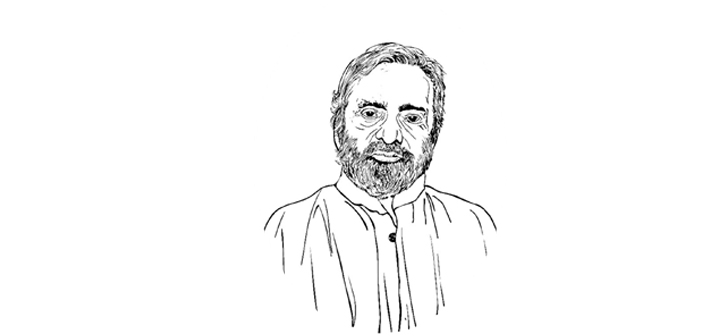Literary giant (1932-2014)
Dr. Udupi Rajagopalacharya Ananthamurthy, the Jnanpith award winning Kannada novelist who passed away recently, wore many hats during his lifetime. He was a celebrated writer of novels and short stories, literary critic, academician, poet, translator, essayist, thinker, journalist and mentor. Considered as one of the pioneers of Navya a new modernist movement in Kannada literature, URA as he was known, burst into the literary scene with his hard hitting novel Samskara, a scathing, no holds barred attack on Brahmin orthodoxy. The novel equated tradition with an obsolete set of beliefs and rituals prevalent in Hindu society as mirrored in the Brahmin community. The novel also created ripples when it was adapted to the silver screen with noted actor and playwright Girish Karnad essaying the title role of Praneshcharya. While Samskara remained his magnum opus, his other novels like Bhava, Bharathipura and Avasthe were no less popular and hard hitting. He revelled in depicting inter-personal conflicts between family members and also loved to touch on socio-economic issues with great flourish. URA’s short story collections too endeared him to readers with Sooryana Kudure and Mouni being outstanding works of fiction. His novelette Bara and his autobiography Suragi too won him critical acclaim.
Ananthamurthy who was born in the Tirthahalli taluka in Shimoga District in Karnataka, had his early education in his native district before doing his Masters in English literature from the Mysore University. He was later to head the department of English in the same University. He obtained his doctorate from the Birmingham University in the UK where he had emigrated on a fellowship. A prolific speaker at seminars and conferences around the world, URA also served as a visiting professor to several universities in India and abroad. In the 1980s he was appointed as the Vice Chancellor of the Mahatma Gandhi University in Kottayam, Kerala, and he cherished his association with the state dearly. Although extremely proficient in English, Ananthamurthy chose to write in his mother tongue and with his early oeuvre proved that he was far ahead of his times. Among several distinctions was his nomination to the Man Booker Prize in 2013, the only Indian to be on the shortlist that year. He also held pivotal positions in the Kendra Sahitya Academy, National Book Trust and the Film & Television Institute of India. Ananthamurthy was awarded the Jnanpith, the highest national award for contribution to literature in 1994, and the Padma Bhushan in 1998. The Karnataka Government had honoured him with the Rajyotsava award way back in 1984.
Just as he won the hearts of a legion of fans for his writing and oratorical skills, Ananthamurthy also had his share of critics largely because he took extreme positions on issues. He often took pot shots at fellow writers and his scathing criticism of an equally famous writer S. L. Bhyrappa elicited brickbats galore from several of his contemporaries. Among URA’s pet hates was the right-wing organisation the RSS and the political party, the BJP. So vehement was he in his criticism of Narendra Modi that he asserted he would leave the country if Modi became the Prime Minister. Right-wing activists got even with him after Modi became PM by sending him a one-way ticket to Karachi. URA however backtracked by observing that he had no intention of leaving the country and that he had spoken thus in a moment of emotional stress. PM Modi was however magnanimous in a twitter tribute to the writer immediately after his death.
Yet he is someone who breathed life into Kannada literature and contributed to its enrichment by penning six novels, thirty five short stories and ten collections of essays apart from critical appraisals and poems. Ananthamurthy always stood head and shoulders above most of his contemporaries. Multiple national award-winning director Girish Kasaravalli’s documentary on the writer, U. R. Ananthamurthy – Not a documentary but a hypothesis, is a sterling tribute to the man and his work that spanned almost five decades.

